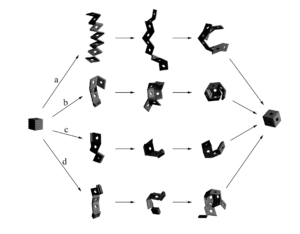Project F12 explorers the possibilities presented by modular habitat construction using rhombic dodecahedra.
In the previous stint of work, the paper entitled Morphology of Polyhedral Space Habitat Modules – Identifying the Ideal Form Using Multi-Criteria Analysis was presented at the International Astronautical Congress 2023 in Baku, Azerbaijan. Since then, the paper has been pre-selected for inclusion in the journal Acta Astronautica, and is currently under peer review.
The current focus of the project is researching the the deployment process for arbitrarily thick polyhedral modules via unfolding.
iPoster presentation IAC 2024 in Milan
Please visit dedicated webpage







